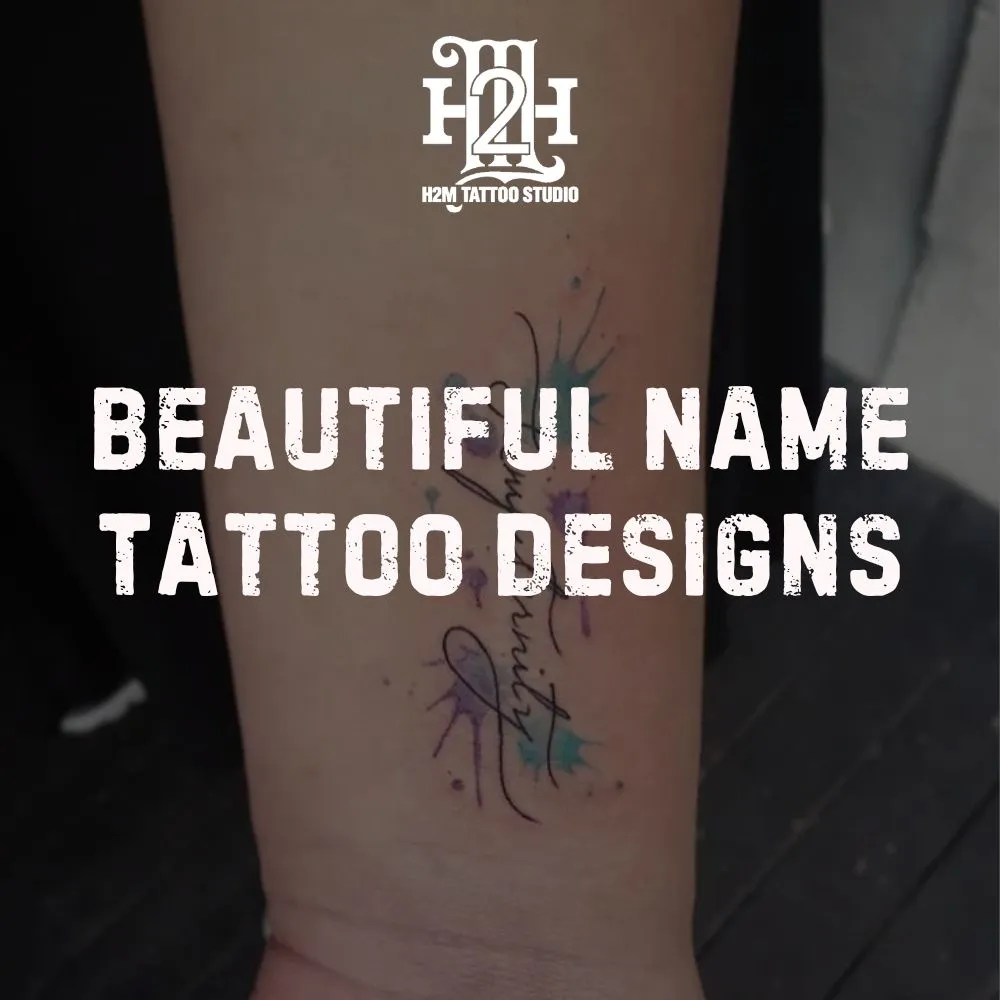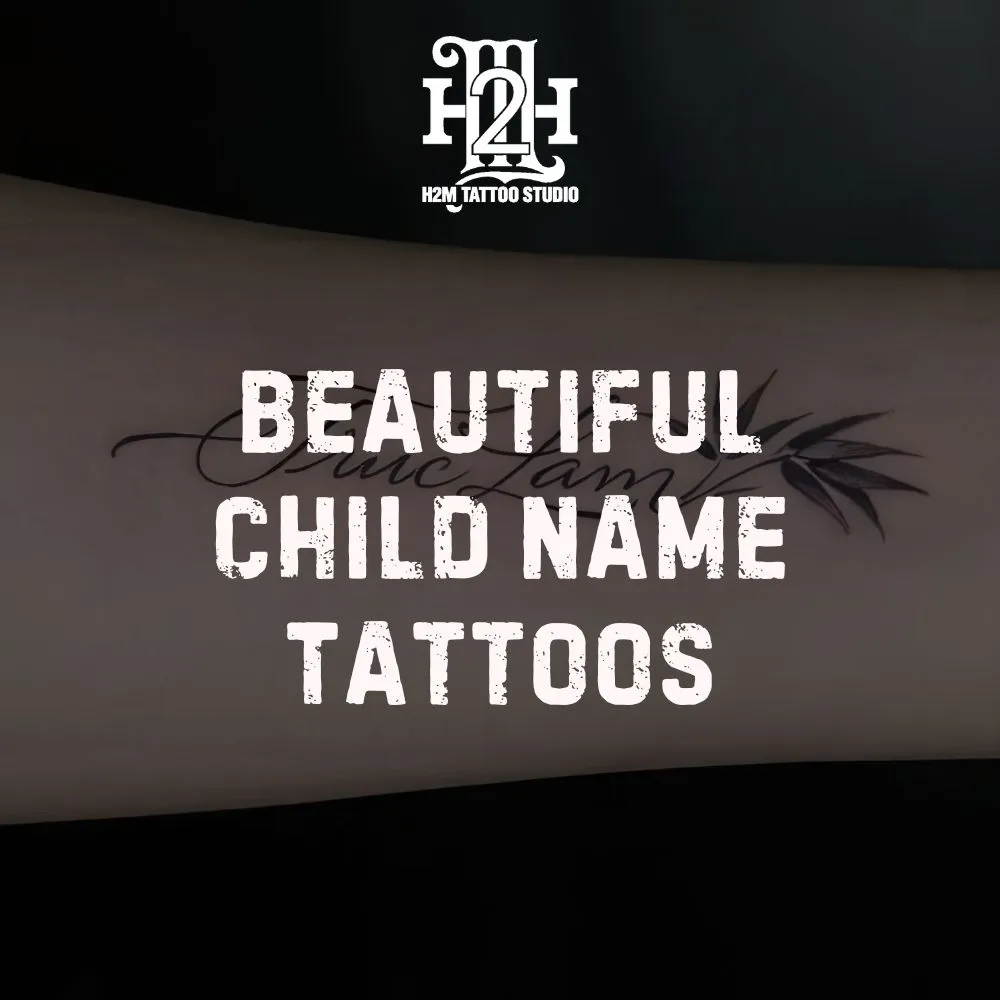The decision to get a back tattoo is often driven by the desire for a large, intricate, and deeply meaningful piece of art. The back provides a magnificent canvas, but one question inevitably follows: "Does a back tattoo hurt?"
This concern is perfectly normal and valid. Tattoo pain is subjective, varying wildly from person to person and even from one area of the body to another. The back, being a large and diverse anatomical area, is no exception. Some spots, like the fleshy upper shoulder, might feel like a mild, irritating scratch, while areas directly over bone, such as the spine or ribs, can be intensely painful.
At H2M Tattoo Studio, we believe that understanding the pain—what causes it, where it’s worst, and how to manage it—is the best way to prepare. This comprehensive guide will set your expectations using a blend of scientific knowledge and real-world experience, ensuring you're empowered and mentally ready for your session. We'll walk you through the anatomy, the worst pain spots, and most importantly, how to minimize discomfort so you can focus on the beauty of your final piece.
What Causes Tattoo Pain? The Science Behind It
To truly grasp why a back tattoo hurts, you need to understand the mechanics of the process. A tattoo machine works by rapidly driving a cluster of tiny, sterilized needles in and out of your skin, delivering insoluble ink into the dermis—the layer beneath the outer epidermis. This process is, by definition, an injury, which triggers your body’s natural pain response.
Key Contributors to Tattoo Pain
The level of pain you feel is directly proportional to several scientific and anatomical factors, especially on the back:
-
Nerve Density: Areas of the back with a high concentration of nerve endings will be significantly more painful. The spine and the sides (near the ribs) are notoriously nerve-dense, leading to amplified pain signals.
-
Proximity to Bone: Pain increases sharply when the needle is working directly over a bone with little cushioning fat or muscle. The spine and shoulder blades fall into this category. The vibration and pressure against the bone are often described as the most unpleasant part of the experience.
-
Skin Thickness: Generally, thicker skin is less sensitive. While the back has relatively thick skin compared to, say, the inner wrist, skin thickness varies. The thick, muscular areas of the upper back tend to be less painful than the thinner skin around the ribs or the middle of the lower back.
-
Psychological Factors: Your mental state plays a huge role. Fear, anxiety, and a lack of preparation can lower your pain threshold. Conversely, distraction, relaxation, and a positive mindset can help the body produce endorphins, which are natural painkillers.
Understanding these factors allows us to precisely map out the pain variations across the back, as detailed in the next section.
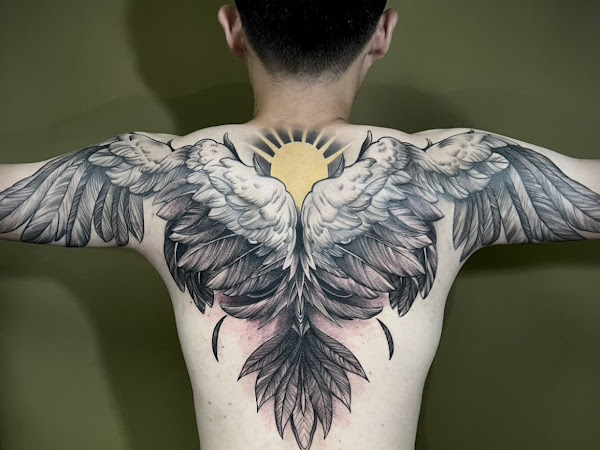
>>>> READ MORE: Does tattoo retouching hurt ? A Complete Expert Guide
Pain Levels Across Different Areas of the Back
The back is a vast canvas, and the pain experience can fluctuate dramatically depending on the specific location. We’ve broken down the back into key regions, categorized by a qualitative pain rating (1 = mildest, 10 = most intense).
| Back Region | Pain Rating (1-10) | Why It Hurts |
| Spine & Vertebrae | 9-10 | Highest Pain. The skin is thin, and the needles are hitting directly on bone with no muscle or fat for cushioning. The bone vibration is intense and nerve-rich. |
| Ribs/Sides | 8-9 | Severe Pain. Skin is very thin, and the area is highly sensitive due to proximity to the rib bones and major nerve clusters. Breathing can amplify the discomfort. |
| Shoulder Blades (Scapulae) | 7-8 | High Pain. While less nerve-dense than the spine, the bone is close to the surface, and the pressure/vibration can be very intense, especially when outlining. |
| Lower Back (Fleshy Area) | 6-7 | Moderate-High Pain. Generally muscular and less bony than the upper regions, but still has higher nerve sensitivity than the upper back. |
| Upper Back (Muscular Area) | 5-6 | Mild-Moderate Pain. Often the least painful area. The skin is thicker, and the underlying muscle and fat provide a natural cushion, making the sensation more of a deep scratching or burning. |
The key takeaway here is that an extensive full back tattoo will involve sessions with highly variable pain levels. You will likely experience the least pain on the thick, fleshy areas and the most severe pain when crossing the central spine or detailing around the rib cage. Your tattoo artist can often plan the session flow to manage the most difficult areas when your adrenaline and focus are highest.
>>>> READ MORE: Does finger tattoo hurt ? Understanding Pain, Experience & Care
Preparing for a Back Tattoo: How to Minimize Pain
Pain is inevitable, but suffering is optional. Effective preparation can significantly increase your pain tolerance and make the entire back tattoo experience smoother.
Actionable Tips for a Better Experience
- Be Well-Rested: Fatigue drastically lowers your pain threshold. Aim for 8 hours of quality sleep the night before your session. A well-rested body is better equipped to handle stress.
- Hydrate and Eat: Eat a substantial, protein-rich meal 1-2 hours before your session. Low blood sugar can make you feel faint and more sensitive to pain. Bring water, juice, or a sugary snack to maintain stable blood sugar levels during long sessions.
- Avoid Blood Thinners: For at least 24 hours prior, avoid alcohol, caffeine, and over-the-counter pain relievers like Aspirin or Ibuprofen. These can thin your blood, leading to excessive bleeding, which can complicate the process and negatively affect healing. Acetaminophen (Tylenol) is generally acceptable, as it does not thin the blood.
- Wear Comfortable Clothing: The artist will need full access to your back. Wear something that can be easily positioned to expose the area while keeping you comfortable and covered elsewhere (e.g., a loose button-down shirt worn backward, or a zip-up hoodie).
- Practice Mental Preparedness: Bring something to distract yourself, like headphones and a podcast or movie. Practice deep, consistent breathing, especially during the more painful parts. Focusing on your breath prevents you from tensing up, which can increase the pain.
- Consult Your Artist: Talk to your H2M Studio artist about your pain concerns. They are experts in guiding clients through the process, offering strategic breaks, and suggesting the best positions to minimize discomfort.
- Consider Numbing Creams: While not for everyone, topical anesthetic creams can be highly effective in reducing initial surface pain. Discuss this with your artist before applying, as some ingredients can affect the skin's texture and the tattooing process.
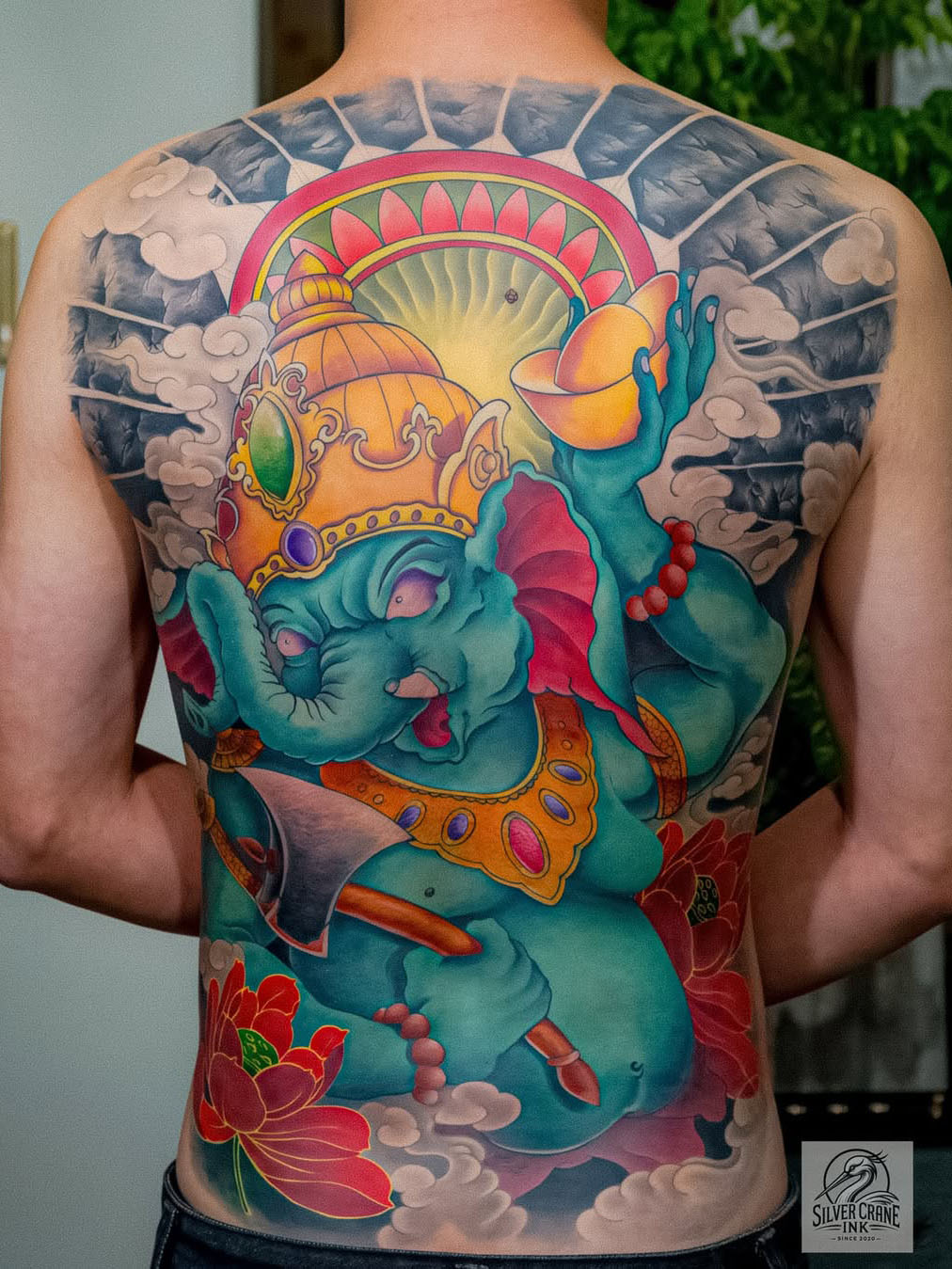
>>>> READ MORE: Does wrist tattoo hurt ? A Comprehensive Guide from H2M Tattoo Studio
What to Expect During the Tattoo Session on Your Back
A back tattoo session, especially for a large piece, can be a marathon, not a sprint. Knowing the sensory experience can help you manage your expectations.
The Sensory Progression of Pain
- The Outline: This is typically the most intense stage. The artist is using single or tight groups of needles to create clean lines, which requires deep, consistent pressure. You will feel a sharp, stinging pain, often described as a cat scratch that’s vibrating and dragging.
- Shading and Filling: This stage is often described as less sharp and more of a dull, burning, or scratching sensation. The artist uses different needle configurations that cover a wider area, making the pain more spread out and tolerable, though it can become irritating over long periods.
- Highlights and Detail: The final passes, often done with bright colors or white ink, can be surprisingly tender, as the skin is already inflamed. The pain will feel sharp again, but usually for a very short duration.
Communication and Breaks
Communication is key. If you need to shift position, take a quick break, or feel dizzy, tell your artist immediately. Professional artists are trained to prioritize your comfort and safety. Never hesitate to ask for a five-minute break to stretch, rehydrate, or simply reset your mind. Session duration also matters; the cumulative effect of a five-hour session will feel far more intense than two two-hour sessions spaced weeks apart.
>>>> READ MORE: What are the least painful places to get a tattoo? Your Complete Pain-Free Guide
Addressing Common Myths About Back Tattoo Pain
Misinformation can elevate anxiety. Here are a few common misconceptions about back tattoo pain, clarified by the H2M Studio team:
-
Myth: Large tattoos hurt less because you "get used to it."
-
Fact: While your body releases pain-dulling endorphins, the cumulative pain of long sessions is real. Pain often gets worse as the session progresses and the skin becomes more swollen and irritated. The "getting used to it" is really just mental conditioning and distraction.
-
-
Myth: The only painful spots are bony areas.
-
Fact: While bone is a major factor, areas with thin skin or high nerve density (like the flanks or the area right above the belt line) can be equally or more painful than a thick, muscular part of the shoulder blade.
-
-
Myth: Black or fine line work hurts less than color.
-
Fact: The color of the ink is irrelevant. Pain is determined by the needle grouping (how many needles are in the cluster), the depth of the puncture, and the duration of the work. Filling and shading with a large magnum needle can be very fast, while detailed white highlights can be surprisingly painful.
-
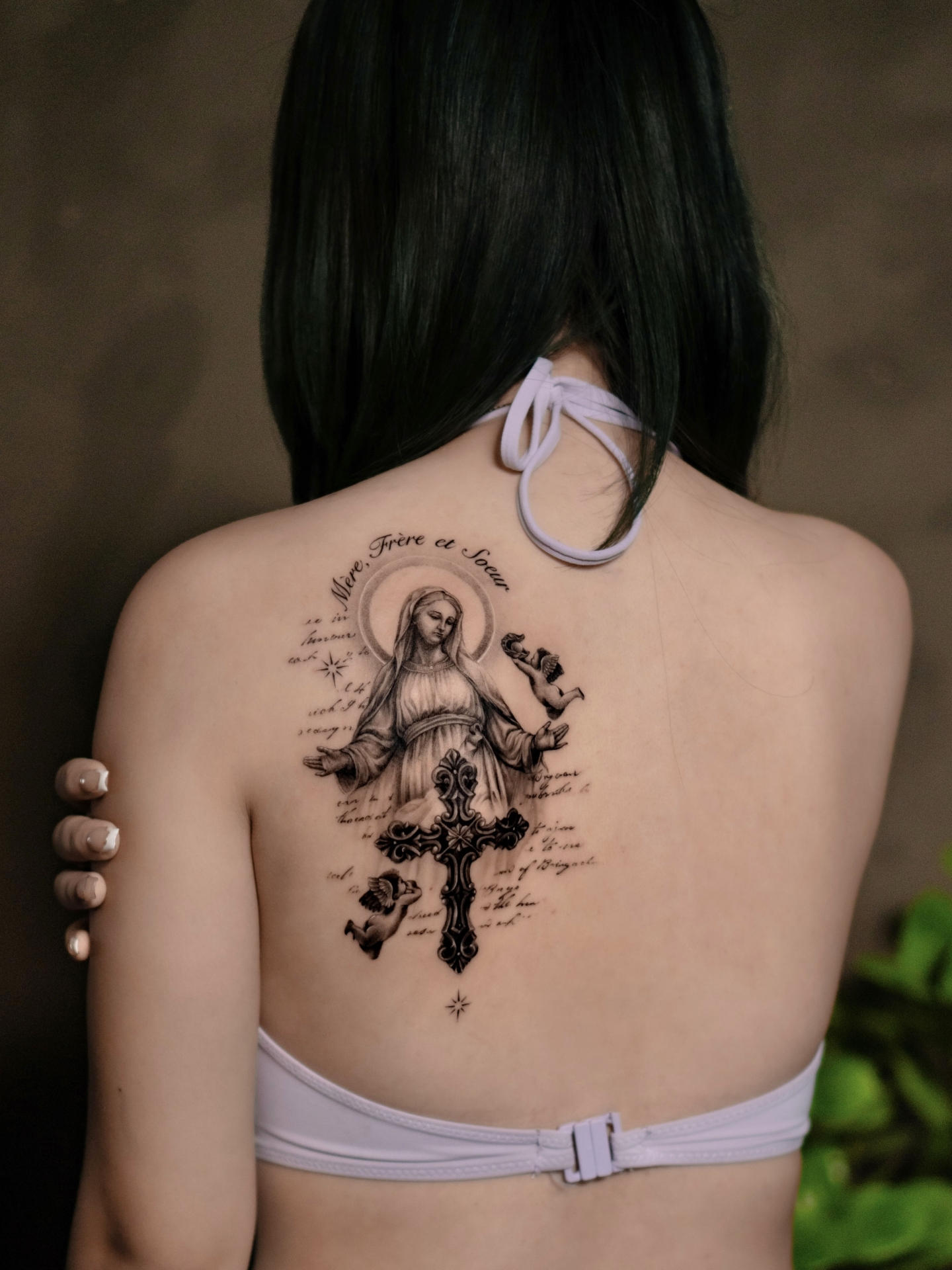
Expert Opinions and Real User Experiences
Hearing from the professionals and those who have gone through it can provide invaluable perspective and reassurance.
Artist Insight: Variability is Key
"Every client's back is different," says Sarah, a senior artist at H2M Tattoo Studio. "A muscular male client might find the upper back a breeze, while a slender client might find the spine excruciating. We always stress open communication. If you're tensing up, we'll stop, get you moving, and work out a plan to finish the session safely. The best thing a client can do is come in rested and fed—it makes a world of difference in pain tolerance."
User Testimonials: Pain vs. Reward
- "My spine tattoo was honestly the worst pain I've ever felt, especially the shading. But it was only for 30 seconds at a time. The rest of the session was a steady, burning discomfort, totally manageable. I'd do it again tomorrow for the result!"
- "I got a large piece on my upper back/shoulder. The shoulder blade outline was rough, but the rest felt like a bad sunburn being scratched. My artist gave me great breaks and checked on my breathing, which helped me stay focused and calm."
The consensus is clear: the pain is temporary, intense in spots, but always worth the permanent art.
Summary: Balancing Pain and Beauty of Back Tattoos
So, Does a back tattoo hurt? Yes, it absolutely will. It is a painful process, particularly over the spine, ribs, and shoulder blades. However, the experience is not insurmountable and is often far less terrifying than anticipated.
The pain of a back tattoo is a temporary price for a magnificent, lifelong piece of art. By preparing physically (rest, food, hydration), mentally (distraction, breathing), and choosing a professional, communicative artist like those at H2M Tattoo Studio, you can significantly mitigate the discomfort. Your preparation allows you to transform the anxiety of "will it hurt?" into the excitement of "when will it be finished?"
Embrace the discomfort as part of the journey. In the end, the pain fades quickly, and you are left with a stunning work of art that completely transforms your canvas. Ready to start planning your masterpiece?
>>>> NOTE NOW:


